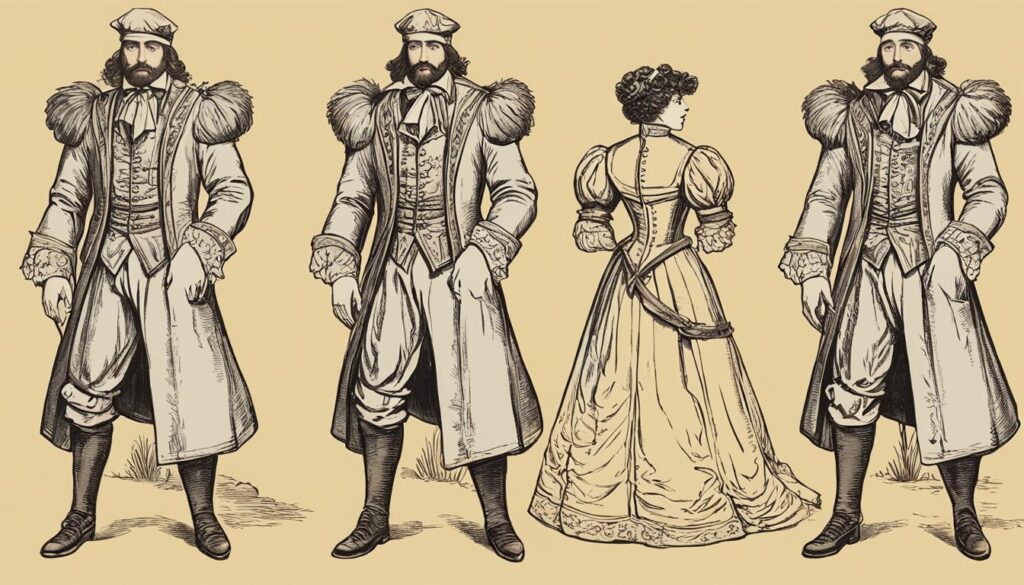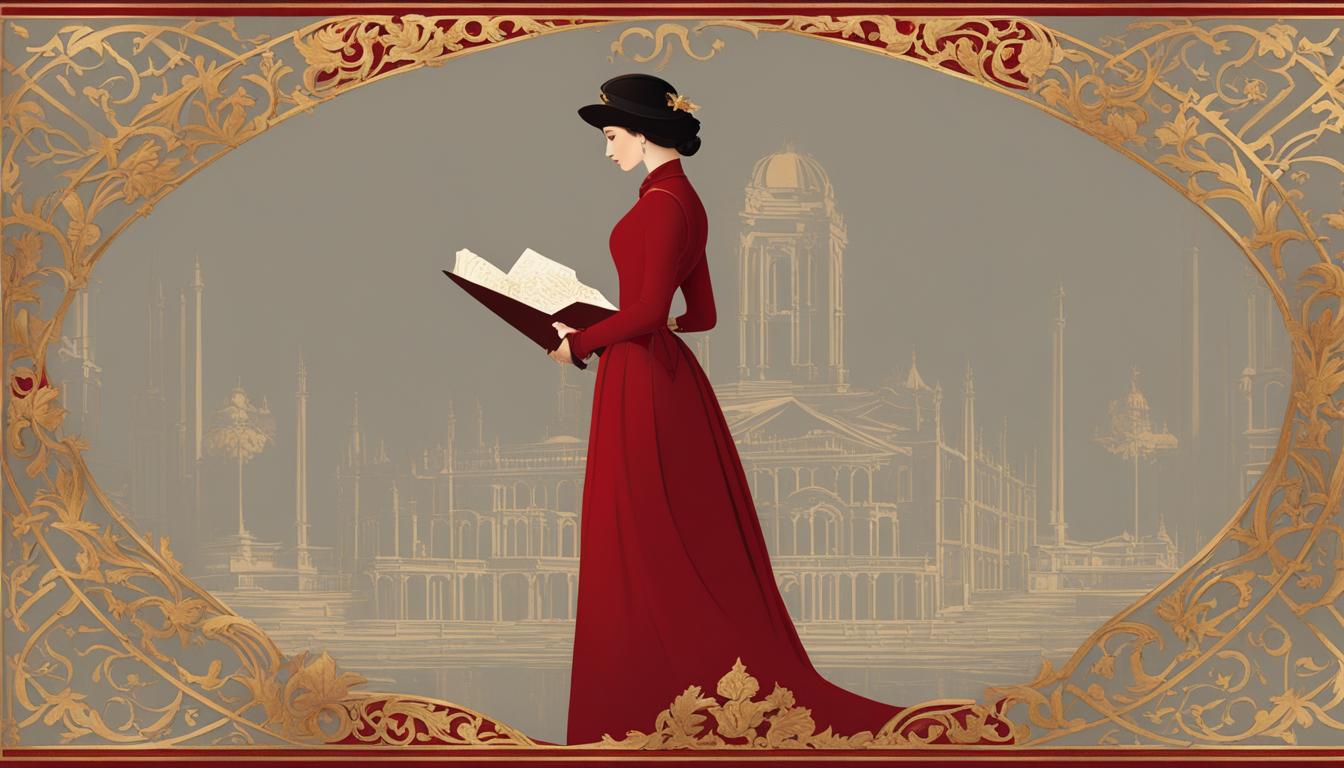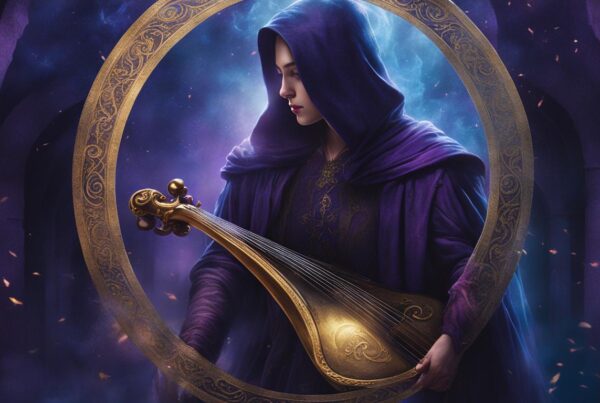Embark on a literary journey that traverses the shadowy canals of 17th century Venice with Christi Phillips’ novel, “The Rossetti Letter.” Meticulously blending the allure of history with the enigma of mystery and the warmth of romance, this historical fiction piece offers readers an escape into a world where the past collides with the present. Delving into the intricacies of a bygone era, Phillips crafts a narrative that entices with its rich detail and compelling storytelling.
Known for her prowess in sketching vivid historical settings, Christi Phillips presents a setting in “The Rossetti Letter” that is as much a character as it is a backdrop. This book has captured the hearts of many, integrating the essence of 17th century Venice with a storyline that explores the depth of human emotion. Whether you’re a stalwart fan of historical novels or a newcomer to the genre, join us as we unravel the legacy of “The Rossetti Letter,” its reception among readers and critics alike, and the distinct authorship of Christi Phillips.
An Overview of “The Rossetti Letter”
“Christi Phillips’s historical novel, The Rossetti Letter, offers readers a dual timeline that intertwines the suspense of a historical mystery with the exploration of a modern-day academic pursuit. Our journey begins with a glimpse into the heart of the plot, inviting us to uncover the shadows of the past along with the novel’s protagonists.
A Glimpse into the Plot
The novel unfurls the narrative of Claire Donovan, a modern-day researcher determined to validate her thesis on a significant 17th-century conspiracy. Her work leads her to dig through the layers of Venice’s past, sifting historical fact from fiction, as she follows the trail left by Alessandra Rossetti, a woman deeply embroiled in Venetian intrigue. This palpable blend of academic investigation and dramatic revelation from centuries ago deftly carries readers across time, offering suspense that is anchored in the rich tapestry of historical events.
Setting the Scene: Historical Venice
Phillips employs the city of Venice not merely as a setting but as a living entity that breathes character into the story. The author’s vivid portrayal of the floating city, with its labyrinthine canals and opulent palazzi, serves as more than a mere backdrop; it becomes an indispensable character steeped in allure, decadence, and mystery. This atmospheric immersion into historical Venice enriches the narrative, tantalizing readers with descriptions of its glittering masquerades and shadowy intrigues.
Themes Explored in “The Rossetti Letter”
Beyond its thrilling plot and sumptuous settings, The Rossetti Letter delves into themes that resonate throughout history. The book scrutinizes the intricate dance of power, unearths the weight of secrets, and embarks on a relentless quest for truth. These themes are skillfully interwoven into the dual storylines, with each character’s journey reflecting the inherent struggles and moral complexities of their respective eras. It is a testament to the enduring nature of these themes that they find relevance in the parallel stories of Claire Donovan and Alessandra Rossetti, separated by centuries, yet connected by the enduring impact of actions and choices.
“The Rossetti Letter” Historical Accuracy and Fictional Elements
The enthralling journey through “The Rossetti Letter” is not just a flight of fictional fancy but a walk along the delicate tightrope of historical veracity interspersed with the creative liberties of narrative fiction. Christi Phillips crafts a tale that, while rooted in the rich soil of the past, blooms into a captivating story that holds its own in the realm of historical fiction.
The Real Historical Figures Behind the Story
Key to the novel’s allure is its cast of characters – some born of imagination, others with a tangible footprint in history. In the intricate dance of fact and fabrication, readers encounter personalities who once carved their legacies into Venice’s storied annals. The novel’s persuasive setting is enhanced by the meticulously researched lives and events that Phillips deftly intertwines with the concocted players of her narrative.
The Fine Line Between Fact and Fiction
Although the novel is a work of imagination, its spine is built upon the historical framework of 17th century Venice. As readers are guided through a labyrinth of intrigue and revelations, they witness the balance that historical fiction authors must strike—merging authenticity with the art of storytelling. This synthesis allows for an exploration that goes beyond what history books offer, granting a fleshed-out and vibrant world where historical figures breathe the air of their reimagined lives.
| Historical Figure | Real-life Impact | Role in “The Rossetti Letter” |
|---|---|---|
| Gasparo Contarini | Venetian diplomat and cardinal known for religious reform efforts | Inspiration for the foil to the protagonist’s endeavors |
| Giovanni Paolo Oliva | Superior General of the Jesuit order | Depicted as a character with a nuanced moral compass |
| Elisabetta Caminer Turra | One of the first Italian women to publish a journal | The figure behind a fictional counterpart driving women’s roles in the story |
| Baldassare Longhena | Architect of the baroque Basilica di Santa Maria della Salute | Symbolic representation of Venetian resilience and ingenuity |
This examination of “The Rossetti Letter” not only unravels the threads of fiction interwoven with the tapestries of history but also reflects upon the author’s adeptness in creating a world where readers can question what they know and marvel at how it could have been. The characters both historic and conceived serve as conduits to a past rendered more vividly, challenging us to discern the nuances in the shades of historical truth, and to appreciate the artistry in its reinvention.
The Characters of “The Rossetti Letter”
The heart of Christi Phillips’ “The Rossetti Letter” lies in its rich tapestry of characters, who not only bring the narrative to life but also offer a window into the soul of 17th-century Venice. Through a meticulous weaving of character arcs, readers are presented with a narrative that is as much about personal transformation as it is about historical mystery.
The protagonist, Claire Donovan, embodies the struggle between academic integrity and personal ambition, revealing layers of complexity as she delves into the shadowy past of Alessandra Rossetti, a character whose life seems to mirror the labyrinthine streets of Venice itself. Let’s examine the main characters and their evolution throughout the narrative:

| Character | Role | Development | Connection to History |
|---|---|---|---|
| Claire Donovan | Modern-day researcher | From a determined academic to someone who understands the nuances of the past | Interprets historical events through her research |
| Alessandra Rossetti | 17th-century courtesan | Grows from a mere survivor to a key figure in a conspiracy | Inspired by women of the era, reflects cultural and social dynamics of Venice |
| Andrew Kent | Claire’s mentor | His skepticism evolves into admiration for Claire’s journey | Represents the skepticism of contemporary historians |
| Margherita | Ally to Alessandra | Develops from a protective friend to a tragic figure | Embodies the spirit of loyalty typical of the time |
| Marco | Aide to Alessandra | Moves from a secondary character to a crucial participant in the plot | His journey mirrors the lives of many unsung heroes of history |
Character relationships in “The Rossetti Letter” are dynamic and evolve as the story unfolds. Their interactions often reflect the historically accurate social hierarchy of the time, which adds an extra layer of depth and authenticity to the story. Exploring these dynamics not only reinforces the sense of the period but also underscores the timeless human emotions that tie the present to the past.
Reviews have highlighted the believable nature of characters despite the dual timeframes, often praising the compelling connections made between fictional characters and their historical counterparts. Such feedback underscores Phillips’ capacity to create a world that resonates with readers, allowing them to immerse themselves in the intrigue and romance of historical Venice. As we navigate through the book’s pages, these characters challenge our perceptions of history and fiction, proving that sometimes, in the art of storytelling, they are two sides of the same coin.
Critical Reception and Reviews
Critics have long held a mirror to literature, reflecting its success and impact on culture. “The Rossetti Letter” by Christi Phillips is no exception. Garnering attention from some of the foremost literary publications, the book has invoked a mixture of admiration and critique. It’s the voices of professional critics, juxtaposed with the sentiments of avid historical fiction readers, that complete the tapestry of the novel’s reception. This section delves into various perspectives that highlight the novel’s standings within the literary world.
| Source | Critique | Reader Feedback |
|---|---|---|
| The Guardian | Praises the rich historical tapestry and vivid portrayal of Venice | Affirms the immersive experience but criticizes pace |
| The New York Times | Admires the interweaving of historical fact with fiction | Highlights connection with characters |
| Historical Novel Society | Acclaims the detailed research and authenticity | Readers loved the educational aspect blended with drama |
| Booklist | Comments on Phillips’s ability to evoke the aroma of 17th-century Venice | Enjoys the descriptive nature, though some found it overpowering |
When wading through the waters of online book clubs and reading communities, the consensus swings towards a fascination with the novel’s romantic elements intertwined with the political intrigues of Venice. Yet, some note that amidst the luxuriant description, the plot occasionally loses its pacing, underscoring the challenge of weaving intricate historical threads into a cohesive narrative.
One reader eloquently states, “Phillips captures the allure of Venice so poignantly; it feels as though one is walking through the piazzas and canals alongside the characters.”
This balance – or occasional lack thereof – between historical richness and storytelling is a recurrent theme within reader discussions. It’s the dynamic pull between educational value and entertainment that perpetuates vibrant debates around “The Rossetti Letter’s” place in the genre’s echelons. Therefore, critical insights and reader perspectives combine to shape the multifaceted panorama of reviews, painting a portrait of a novel that continues to enthral and engage within the realm of historical fiction.
Author Christi Phillips: A Biographical Sketch
A profound blend of meticulous research and imaginative storytelling marks the literary journey of author Christi Phillips. Her novels, acclaimed for their historical accuracy woven with gripping plots, showcase her passion for breathing life into bygone eras. Here we delve into Phillips’ background, the milestones of her writing career, and the inspirations that have shaped her narratives.
Phillips’s Writing Career and Inspirations
Christi Phillips has not only captivated readers but has also enriched the historical fiction genre with her distinctive voice. Her foray into literature was fueled by a fascination with history and an aspiration to create stories that resonate with authenticity. Drawing upon extensive research, her work is a testament to her dedication to revisiting and reimagining the past.
Phillips’ inspirations often spring from real historical incidents and figures, which she artfully transforms into the backbone of her intriguing plots. It is the unexplored corners and lesser-known narratives of history that spur her creativity, allowing her to construct rich tapestries of intrigue and context.
“Every character, every street I write about has been a discovery – a hidden gem in the landscape of history that I hope will enlighten and entertain my readers as much as it does me.” – Christi Phillips
Other Works by Christi Phillips
- The Devlin Diary, which transports readers back to the Restoration-era London;
- The Rossetti Letter, her debut that intertwines suspense with the allure of 17th-century Venice;
- Follow-up novels that continue to explore the depths of human experience against a tapestry of historical events.
Across her body of work, common threads emerge: strong female protagonists who navigate the complexities of their times, and cleverly plotted mysteries that blend fact with fiction. These thematic connections highlight Phillips’ commitment to offering a voice to the silenced historical female figures while still providing the thrill of a suspenseful read.
Christi Phillips’ contributions to historical fiction have etched her name among authors who not only entertain but educate, providing insights into periods of time shrouded in obscurity or misinterpretation. Her works invite readers to look beyond the pages of history books and experience the past through the eyes of vividly crafted characters and storylines.
The Significance of the Letter in “The Rossetti Letter”
In “The Rossetti Letter,” the letter itself operates as a narrative focal point, propelling the plot forward and adding depth to the protagonists’ journey. Steeped in enigma, the document echoes the rich tapestries of Venice’s storied past, interweaving fact and fiction to create a tapestry of intrigue.
Exploring the Letter’s Role in the Plot
This singular piece of correspondence is more than just a plot device; it acts as a catalyst for action, unraveling the layers of mystery that enshroud the narrative. Its discovery compels the modern-day researcher to dive deep into the swirling mists of 17th-century Venetian conspiracies, bridging timelines and whispering secrets that only the past holds.
Symbolism and Mystery Surrounding the Letter
The letter’s presence in the novel is a glowing symbol of hidden truths awaiting exposure. Within its scripted lines lies the power to alter perceptions and challenge established histories. Its symbolism extends beyond the parchment, hinting at the latent power of knowledge and the peril of secrets unguarded.
In the realm of historical fiction, such devices are not mere tools for narrative convenience; they are essential elements that bestow upon the tale a feeling of authenticity and suspended disbelief. By imbibing the letter with a mysterious aura, the author invites readers to not only interpret its literal contents but to also ponder its metaphorical implications within the novel.
“The letter is at once a key to the past and a mirror reflecting the perennial quest for truth—a narrative force that compels us to look beyond the seen into the realm of the hidden.”

Let us further examine the letter’s significance by comparing it to other narrative devices commonly found in historical fiction.
| Narrative Device | Function | Symbolism | Impact on Reader Intrigue |
|---|---|---|---|
| The Rossetti Letter | Drives the plot with secrets and discoveries | Represents quest for truth and power of knowledge | High – Central to unraveling the mystery |
| Hidden Diaries | Provides personal insights into characters | Symbols of intimate thoughts and historical perspective | Moderate – Adds depth to personal narratives |
| Ancient Artifacts | Connects past events with present day | Emblems of continuity and the passage of time | Varied – Depends on relevance to the central story |
| Secret Societies | Create suspense through clandestine operations | Symbolize the allure and danger of hidden power | High – Often pivotal in conspiracy-driven plots |
In conclusion, the letter within “The Rossetti Letter” stands as a testament to the genre’s ability to fuse literary artifice with historical texture. The artifact is a vibrant thread in the narrative weave, pulling readers through a labyrinth of suspense and revelation.
Audiobook Review of “The Rossetti Letter”
Embracing the modern form of storytelling, audiobooks bring a new dimension to the written word, especially with historical fiction where the ambience and accent can enrich the experience. “The Rossetti Letter” is no exception. Its venture into the world of sound has been met with enthusiasm. This section seeks to dissect the qualities that make or break an audiobook adaptation.
Narration Quality and Performance
At the forefront of any successful audiobook is the narrator’s performance, which in the case of “The Rossetti Letter” has received notable acclaim. The narration delivers not just accuracy with pitch and pace but also eloquently captures the essence of 17th century Venice. A well-executed narration acts as a bridge between the author’s story and the listener’s imagination, and here, it does just that, breathing life into Christi Phillips’ characters with a voice that wraps around the listener like a velvet glove.
Comparing the Audiobook to the Print Edition
When comparing the audiobook to the print edition, subtle nuances in storytelling come to light. While the print version allows readers to delve into the depths at their own pace, relying on their imagination, the audiobook provides a predefined path of engagement through voice modulations and pauses. These auditory cues can emphasize different aspects of the narrative, perhaps casting a new light on a scene or character than one might have perceived in reading.
The table below outlines listener feedback highlighting key differences and preferences between the two formats:
| Aspect | Audiobook | Print Edition |
|---|---|---|
| Engagement Level | High due to narrative voice | Dependent on reader’s immersion |
| Convenience | Accessible on-the-go | Requires dedicated time and place |
| Interpretation | Guided by narrator’s portrayal | Subject to reader’s interpretation |
| Pacing | Set by narration speed | Controlled by the reader |
| Historical Ambience | Enhanced by audio effects and accent | Imagined through descriptive writing |
In conclusion, the audiobook of “The Rossetti Letter” stands as a commendable iteration of the novel, offering a unique sensory experience parallel to the written pages. While preferences between audiobook and print may vary, the quality of storytelling remains constant, proving that the heart of a good story transcends its medium.
Analysis: “The Rossetti Letter” and Its Themes of Betrayal and Redemption
The interplay of betrayal and redemption offers a fascinating dimension in Christi Phillips’ “The Rossetti Letter.” This thematic axis forms the crux of the narrative, driving character evolution and resonating deeply with emergent patterns of human behavior in literature. To discern how these themes are intricately woven into the fabric of the story, we’ll delve into the individual arcs of key characters and pivotal plot points that propel these motifs to the forefront of the reader’s experience.
The Rossetti Letter explores the duplicity woven through human relationships, as the characters navigate treacherous waters of political intrigue and personal deceit. The novel captures the essence of betrayal with deft precision—revealing it as a wound that cuts deeper than any blade and serves as a catalyst for narrative progression.
Conversely, the theme of redemption is crafted with equal finesse, providing a counterbalance to the darkness of betrayal. As characters struggle with their transgressions, their journeys toward atonement are painted in strokes of hope and transformation, offering a testament to the human spirit’s resilience. This oscillation between despair and hope is not only a hallmark of gripping storytelling but also mirrors the complex moral landscapes we navigate in our own lives.
Indeed, the universal nature of these themes is what makes The Rossetti Letter not merely a tale set against the lush backdrop of 17th century Venice but a story that speaks to the core of our shared human experience. Through rigorous narrative analysis and the voices of readers who found personal connections within the book’s pages, we witness the story’s power in invoking a profound understanding of betrayal and redemption.
To illustrate the intricacies of these themes, reader interpretations are crucial. Through thematic discussions in book clubs and online forums, one grasps the nuanced ways in which these age-old constructs are perceived in modern contexts. Scholarly articles reinforce the significance of these themes, outlining their prevalence and necessity for driving narratives within the vast expanses of literature.
The literature of betrayal and redemption remains an inexhaustible source of inquiry and reflection. The Rossetti Letter, with its gripping tale of intrigue and the quest for absolution, stands as a compelling examination of these timeless human preoccupations, ensuring its place in the ongoing dialogue of historical fiction.
Conclusion
Embarking on a journey through “The Rossetti Letter,” readers are transported into a world where the mystique of 17th century Venice comes to life amidst a tapestry of intrigue, and the line between historical veracity and fiction blurs artfully. Christi Phillips skillfully entwines the past with the present, delivering a narrative enriched with thematic complexities of power, secrets, and the unrelenting search for truth. We have traversed through every facet of the book, from its well-crafted plot to its multifaceted characters, and observed its impact on both the genre and its audience.
Final Thoughts on “The Rossetti Letter”
The historical setting of Venice is not merely a backdrop but a living, breathing entity in “The Rossetti Letter,” a character itself entrapped in an array of conspiracies and romances. The exploration of thematic elements such as betrayal and redemption ties the reader’s modern sensibilities to the seemingly distant past, proving the timeless nature of such narratives. This novel not only captures the essence of the era but also establishes a solid footing within the realm of historical fiction, showcasing Phillips’ meticulous research and narrative prowess.
Recommendations for Historical Fiction Lovers
For aficionados of historical fiction who reveled in the pages of “The Rossetti Letter,” the literary world is abundant with works that echo the richness and depth encountered here. Readers might seek out the intellectual thrill of “The Birth of Venus” by Sarah Dunant, or the intoxicating allure of Ken Follett’s medieval world in “The Pillars of the Earth.” Those who find their interest piqued by themes of espionage and romance in historical milieus can immerse themselves in novels like “The Other Boleyn Girl” by Philippa Gregory or “In the Company of the Courtesan,” also by Sarah Dunant. The voyage through history by the means of literature is boundless, and “The Rossetti Letter” stands as a beacon for those embarked on such an enriching quest.



